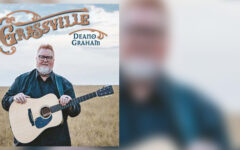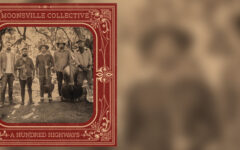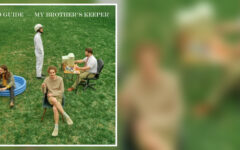
Alan Munde is a well-loved name in the banjo-verse, full stop. He is best known for his masterful melodic and traditional Scruggs style banjo playing, and with over 40 years in teaching and performing he has made a huge influence on players all over the globe. Munde, who is an Oklahoma native, began his bluegrass banjo career while attending the University of Oklahoma. He started going along to fiddle contests and festivals with renowned fiddler and then bandmate, Byron Berline, where he learned the tricks of the trade and how this style of music weaves and unites people from all over the country and the world.
In 1969, Alan was hired by bluegrass legend Jimmy Martin to join the Sunny Mountain Boys, and later moved to Nashville where he founded the acclaimed band, Country Gazette, with whom he went on to record 30 albums. Munde went on to join the faculty at South Plains College in Levelland, Texas in 1986, teaching bluegrass banjo and, since then, he has written a large number of resources for Mel Bay publications, some of these include Getting Into Bluegrass Banjo, Arranging Tunes for Solo Banjo, and Alan Munde Solo Banjo. Now that he is retired from teaching, Munde continues to perform, teach, and record regularly, all while continuing to run and maintain his Banjo College where he sells his instructional books, DVDs, solo albums, and downloadable lessons.
On Bright Munde Alan is joined by Texas based mandolinist Billy Bright, from the Grammy-nominated Austin, Texas band Wood and Wire, also known for his work with Tony Rice and Peter Rowan. He was raised in El Paso, Texas, where he says he swore youthful allegiance to punk rock, and would float across the southern US, carried by his then strong interests in karate, skateboarding, and particularly punk rock. Clearly he accidentally stumbled into Munde’s playing with both being in Texas, and took up the mandolin in his college years. We’re thankful that he did!
Over the years the pair has collaborated in the bands Two High String Band and Hot Texas Burrito, but have more recently come together to make a record in this duo lineup. Released back in 2014, Bright Munde still stands to be a very powerful first duo album release for Munde and Bright. With banjo and mandolin being arguably two of the happiest instruments known to man, I guarantee that you will have a smile on your face while listening through the entirety of this album. With fusions of jazz, blues, folk ballad waltzes, and straight ahead bluegrass instrumentals, Munde and Bright seamlessly combine all of these very differing styles to flow into the spectrum of their ten original instrumentals, letting them influence their two traditional tunes, and more uniquely, their version of Bill Monroe’s Methodist Preacher. They don’t miss a beat while taking on such a challenge, and leave you creatively inspired that such a joyous sound can come from two unlikely matched instruments.
The first track, Geezer Ride, whisks us off on a modal passage, led by strong mandolin and swiftly backed up by Munde’s steady banjo. Geezer is a slang word that stems from the 19th century, and more recently has adapted itself to mean “a man” or even “an old man.” Chromatic changes and melodic phrases are thrown together hand in hand with bluesy string bends on banjo and mandolin to make this track a great opener, and clearly sets the scene for the rest of the album. G is an appropriately named banjo-led bop with twisty changes and runs that almost lend themselves to excerpts of a John Coltrane or Miles Davis solo. I love how this track flows along, making it impossible to not tap your foot.
Track 3, Sad Eyes is exactly what it says. This one reminds me of a certain Disney cartoon where a kitten gets lost in the big city and has to follow many twists and turns to find its way back home. It’s filled with chord changes that make you feel a deeper sense of emotion. Old Yellow Rocking Chair is another original of theirs that almost sounds old, like the Old Spinning Wheel. Played with great authority like they have been playing it all of their lives, the solo swapping on this track and the conversational sharing of the melody at the end of the track is particularly sweet and happy sounding.
Track 5 brings us to a swingy number called Like Sonny, not to be confused with the John Coltrane track, but equally as tasteful and most likely written with legendary banjo player Sonny Osborne in mind. The descending and ascending melody line reminds me of Scruggs’ well-loved Foggy Mountain Special. The banjo backup particularly stands out to me on this track, with a consistent yet decorative banjo line that fits so nicely with the mandolin.
Tumblin‘ picks us up and sets us right in the middle of Paris, with this french sounding waltz led by Bright’s twinkly mandolin. This is one of my favorite tracks on the album, arranged to highlight the chordal melodies from Mandolin and Banjo. Past the halfway mark through the album, track 7 lands us on the Bill Monroe tune, Methodist Preacher. Their great version of this familiar tune starts off at a walking tempo, and then kicks up a gear in the intro to place us into a fiery fiddle jam speed. Jaybird is a sweet traditional tune that is not to be confused with other similarly named tunes, Marching Jaybird, Jaybird in a High Oak Tree, and Jaybird Died of the Whooping Cough. Munde and Bright play this tune with such energy that their version will be referenced for many years to come.
Hot Dog Dreams, has strong tastes of jazz and newgrass, particularly in the solo sections where we hear the technical explorations of both Munde and Bright as they swap solos with ease. Munde and Bright have a gift of making these tracks sound relatable to hardcore bluegrass fans, yet not being totally removed from the colorful chord changes of jazz and more modern newgrass. Everybody Say Wow showcases their ability to tear it up on a straight ahead bluegrass instrumental filled with alternative chord changes that are a big defining part of Munde’s beloved tune writing. Effortlessly we drift into the peaceful original tune penned Plurabelle, with Bright’s mandolin sweetly leading the flowing melody line and being so nicely backed up by Munde’s distinctive banjo backup. This track clearly has elements of early Baroque music, all the while still staying true to the distinctive sounds and techniques of traditional bluegrass mandolin and banjo.
The welcomed twisty modal melody of Red Fox in the Bush is a joy to the ear and really highlights the teamwork of Munde and Bright, as Munde provides solid backup to Bright’s toneful mandolin performance on this track. After making it this far in the album you might wonder how this duo could possibly end an album filled with so many notes, technical arrangements, and energetic performances. They chose the perfect closing to tis 13 track album, with a great version of the traditional tune, Who Killed The Shanghai Rooster? This lesser played tune will eventually find itself back in the jam circle, most likely through the inspiration of this well executed performance from Munde and Bright. Their own version of this track is filled with traditional licks and newgrass influenced passages, which ends this album on a note of unity between both styles.
So after saying all that, if you are a fan of instrumental music, specifically played by two of the most unlikely paired instruments in the acoustic world, then you need to have this album in your collection. Not only will it open your eyes to the possibility and realms that mandolin and banjo can tread on, but the creativity of this duo will most likely inspire you to pick up your instrument and play along. And that’s really what it’s all about.
You can order Bright Munde here, as well as finding out more about Bright and Munde’s other work.







